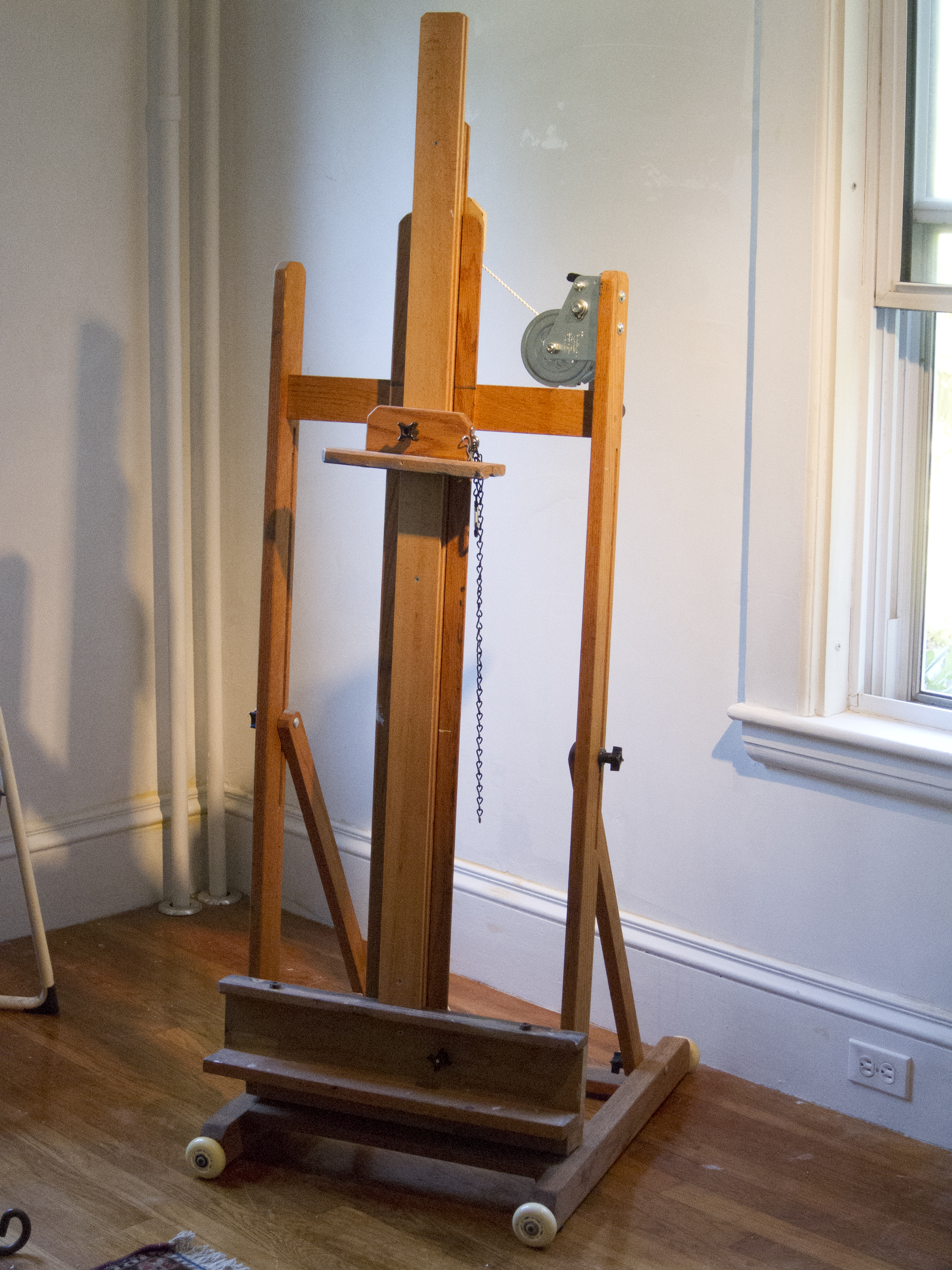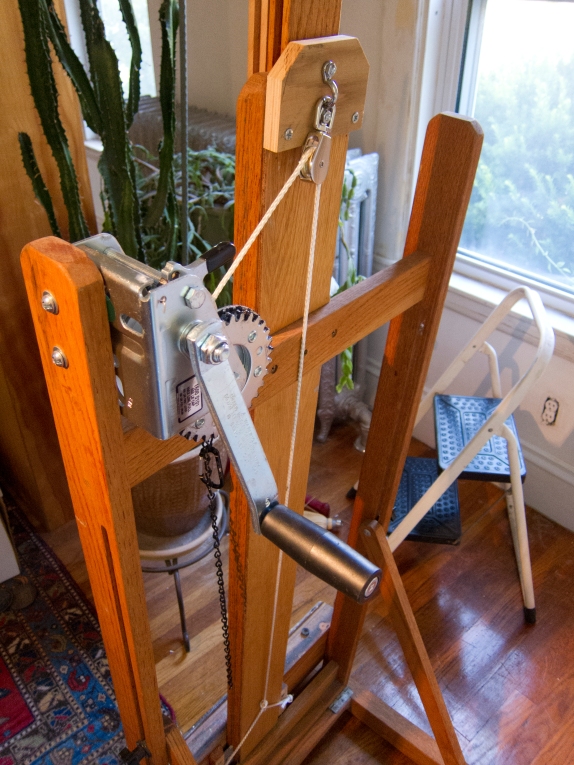HA! Just got this message: "Warning: this topic has not been posted in for at least 120 days.
Unless you're sure you want to reply, please consider starting a new topic."
No kiddin'.

(I don't know if I'm just slow, or what, but I've been chipping away at this for over 5 years now.)
Well, I've been shooting with this thing and working on the mechanism and shooting and cursing and checking Craigslist... and this is the result.

After poking away at this thing I found a few models of artists' easels that have an assembly that holds the painting and moves up and down in one piece. Seems obvious, right? Unfortunately, the classic artists' H easel isn't really set up like that, and the ones I found that were, were enormous and expensive. There are a few varieties, some can be modified and some come that way out of the box. This easel I found on CL and needed some modification. Even with all the stuff on it, it's under 40lbs and folds to about 6" flat.
I've found a couple of other things. Raising and lowering the work really needs some sort of lifting mechanism. It's just not safe to have a big, valuable painting on the thing and try to muscle it up or down, and it's very difficult to do so at any sort of precise increment. If you're using a live-view system, you're usually standing between the camera and the work, as well. The motor drive solves this beautifully, but it's expensive and heavy, and you need to plug it in. This one uses a hand winch from an ATV trailer - about a $30 part, and does a fantastic job.

The wheel assembly is just a set of rollerblade wheels. They work amazingly well. I've mounted them with a good bit of friction so the whole thing doesn't roll by itself, or move when I'm cranking. I have one more addition to the thing - a clamp that will lock the wheels.
One seemingly minor addition, but far from unimportant, is a safety clip and wire to keep the work from falling off if somehow it jars loose. And I've had that happen.

I'm going to do a little more formal design on the wheel assembly, actually putting a little trolley together that can be easily mounted to any easel. I've found that about 90% of the work I shoot only needs about three feet of horizontal movement, so you scale that out with a simple tape measure or yardstick.
The motorized version hasn't changed too much, except the addition of a motorized horizontal drive with remote control. The truth is, that's nice, but all that stuff adds weight, and most of the time I'm working on location and I'm not getting younger.

I'm not too far from pulling in some robotic guys and getting help programming and automating the whole affair, but to tell the honest truth, as cool as that would be, it makes something that's fairly cheap, light and elegant into something expensive, heavy and complicated, and for what? Just the part about not having to double-check for all my cords and remotes and all that, when I'm packing up is enough to put me off that direction.
I have lots of photos of both versions on the site:
http://xy-easel.com/I'm actually thinking of putting a how-to together, or selling kits, or even selling assembled easels. I could make a little drinkin' money on the side if there's interest, but anybody handy with a drill and a screwdriver with a sharp eye could probably put this together...